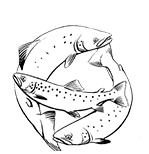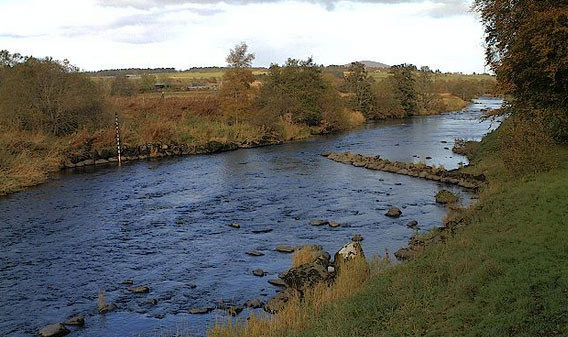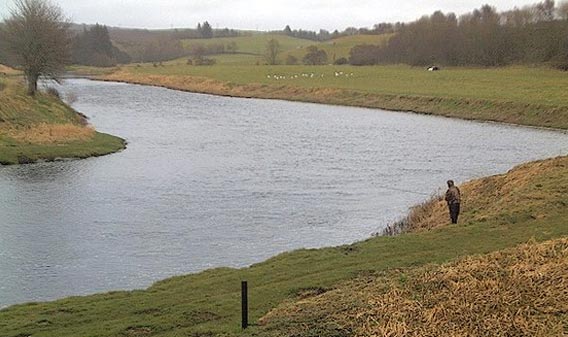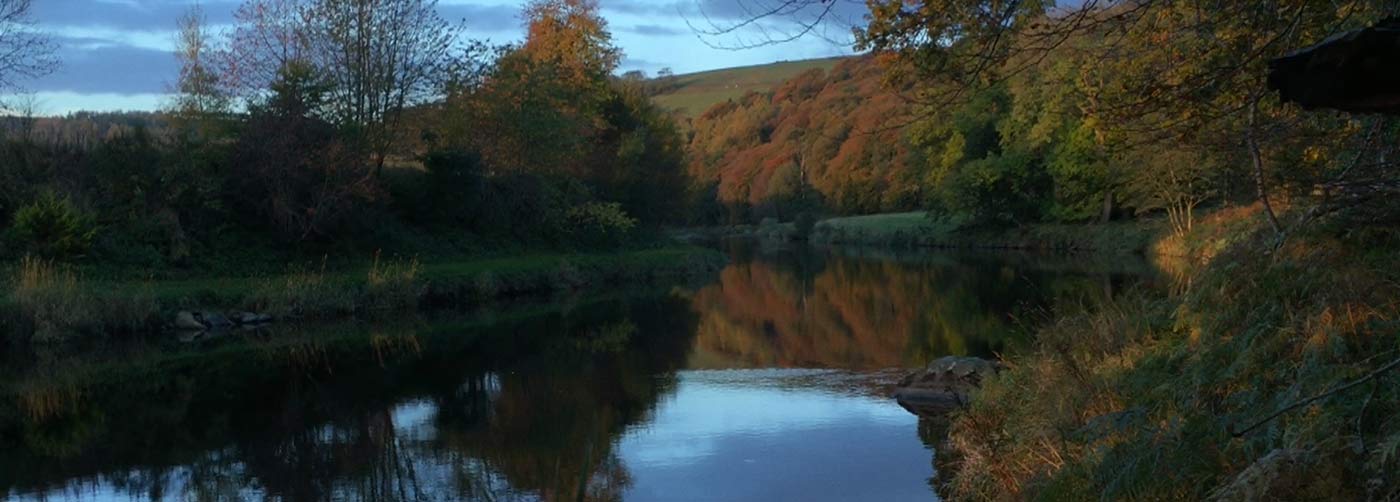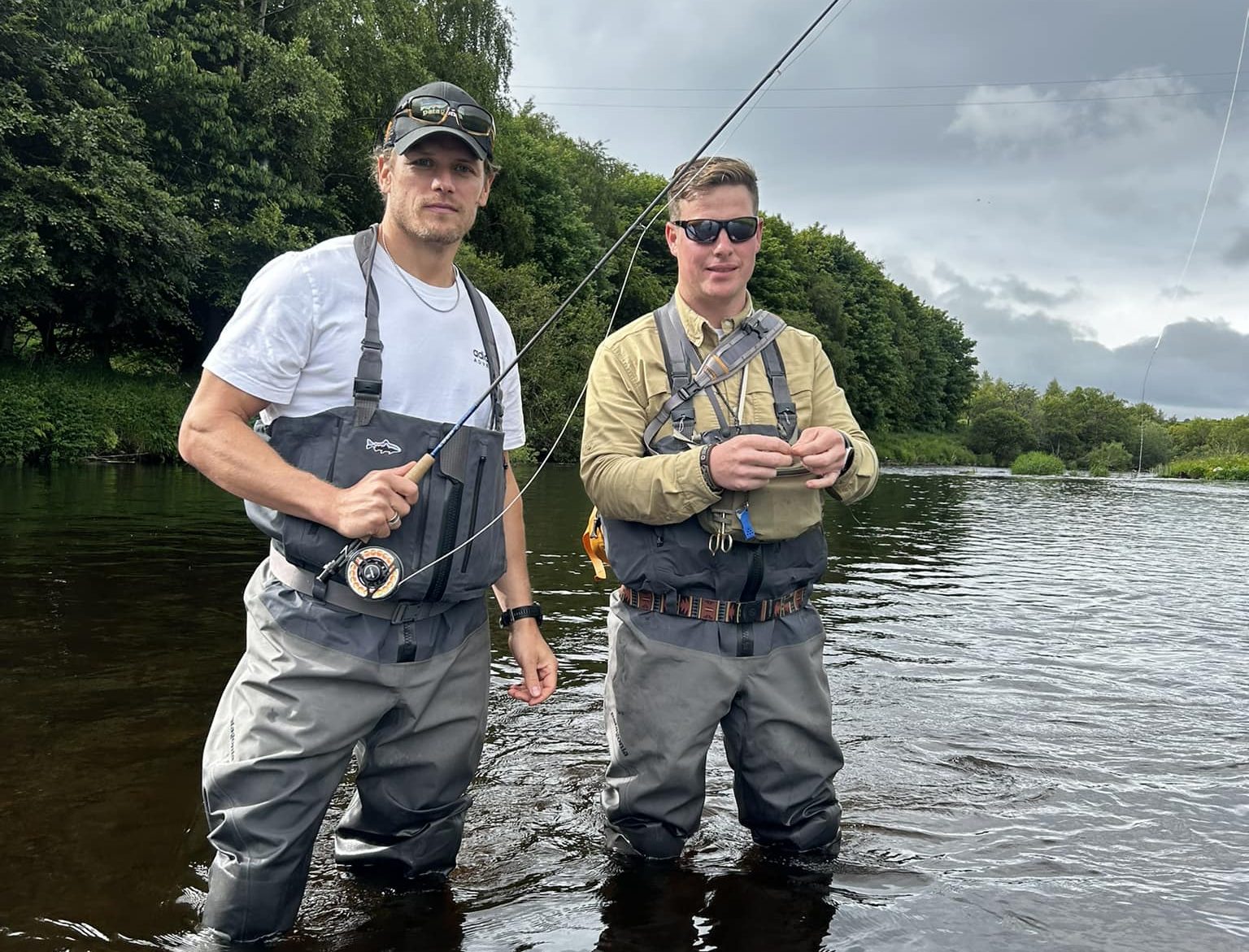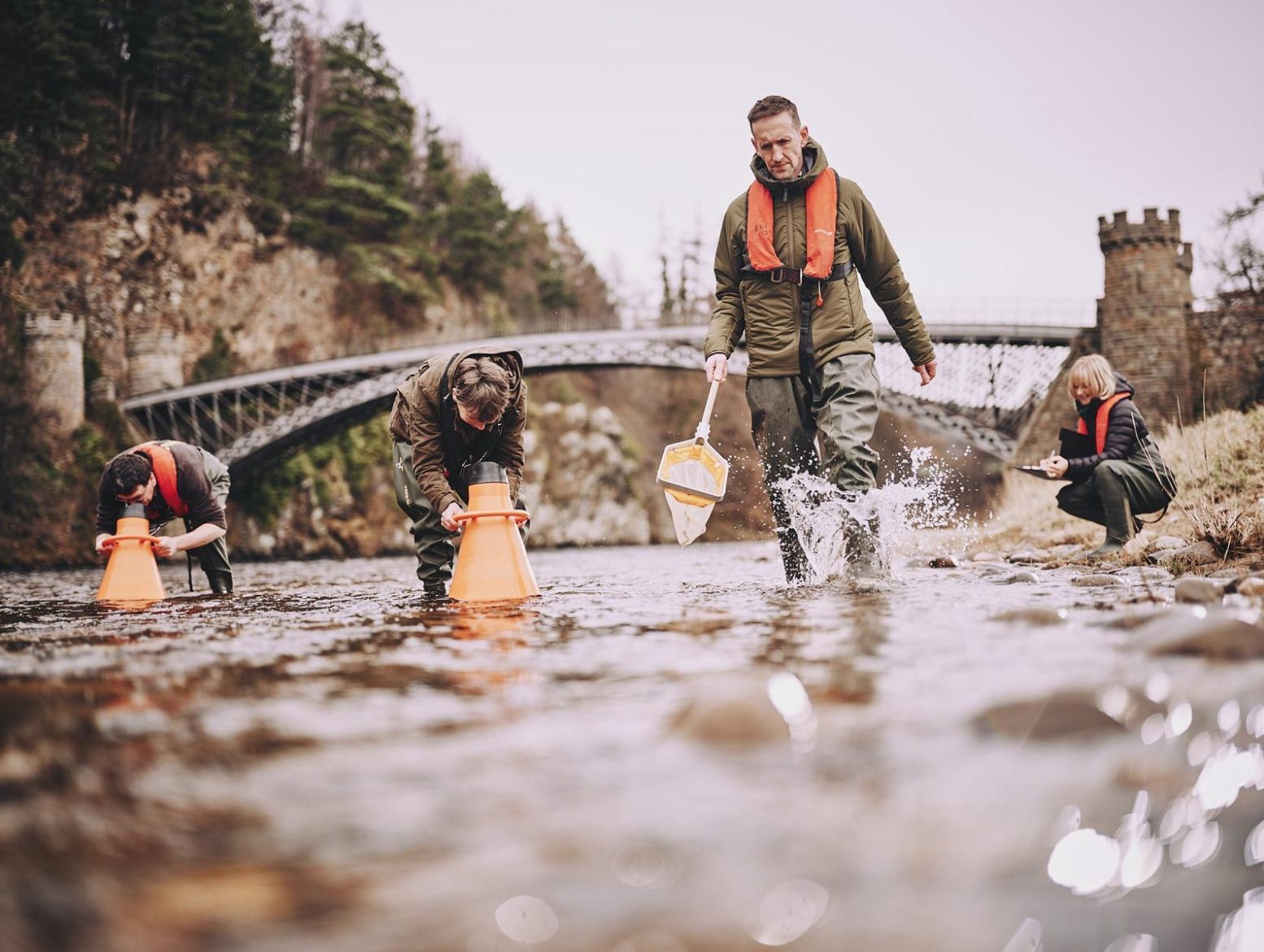This is an article written by Dr. Ken Whelan, a Fisheries Consultant and Chairman of the Atlantic Salmon Trust Scientific Advisory Panel. He wrote an article entitled Salmon Under Pressure – Identifying the “Likely Suspects”, addressing the various mortality factor candidates – described as ‘likely suspects’ – which play a role in putting salmon under pressure throughout the freshwater, marine and migratory phases of their life. The article was published in Ireland’s leading Angling Magazine ‘Off The Scale’ (Issue 25, Nov-Dec 2018) and we are kindly allowed to reproduce it here.
He also answered some of our Trust’s burning questions regarding the Mackerel hypothesis, restocking and smolt ranching, as well as his thoughts on most effective management measures when resources are limited.
We’ll jump right in with his article and have added his answers to our questions at the end. Ken is a great writer and this is an interesting read, so don’t miss it.
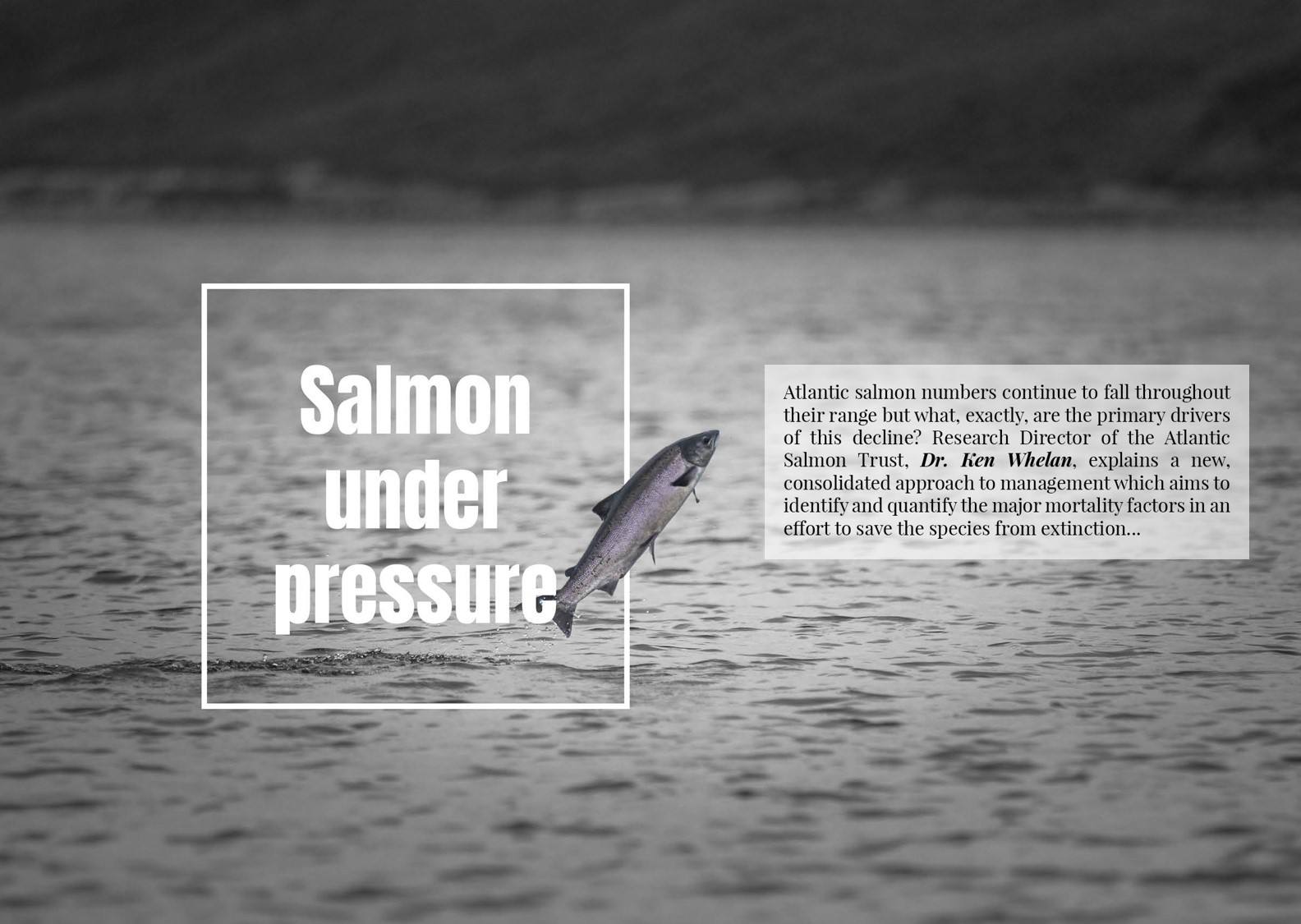
Salmon Under Pressure – Identifying the “Likely Suspects”
By
Ken Whelan
A non-technical breakdown of the Atlantic Salmon Trust’s ‘Likely Suspects Framework’
Following completion of the SALSEA or ‘Salmon at Sea’ project in 2011 I wrote an article for Trout & Salmon magazine summarising the results of the programme and what had been achieved. My final paragraph read as follows:
“Freshwater temperatures are rising, smolts are growing faster and the smolt age is dropping. Younger smolts are often smaller and therefore do poorly at sea. Countering the effects of increasing water temperature through providing cover and shading and ensuring that abstraction and water regulation are done in a manner which ensures overall temperature stability are just some of the actions that must now be prioritised. We have long talked about the impacts from forestry, pollution, aquaculture in the marine and freshwater environments, and perhaps in the past believed that we had the luxury of time to deal with these issues. In the face of what we have recently learned about the stocks which are under pressure and the stocks at risk at sea, taking urgent management action in these areas is no longer a choice – it is an imperative.”
In the intervening years, determined efforts have been made to improve the freshwater lives of salmon and tough conservation measures have been taken to protect wild spawning stocks which were at risk. However, despite such efforts, marine survival has stayed stubbornly low. Adult returns to freshwater have at best stayed stable but in some areas major stocks have plummeted to alarmingly low levels. Fry and parr census data tell us, in general, that freshwater systems are capable of producing adequate numbers of healthy smolts but increasingly the overall production of smolts is being compromised by poor adult returns.
Whatever part of the salmon’s range you find yourself in, you will find advocates for particular mortality factors which they feel passionately are the main cause of these problems. Aquaculture impacts, bird predation, seal predation, water quality, pelagic by-catch, river drainage, hydro-schemes – all have been blamed over the years. Every salmon angler, and indeed every salmon manager, has their own views on the principal causes of the massive decline in overall salmon survival. Some of these views are well supported by scientific data while others depend solely on raw, sincere passion and outspoken conviction.
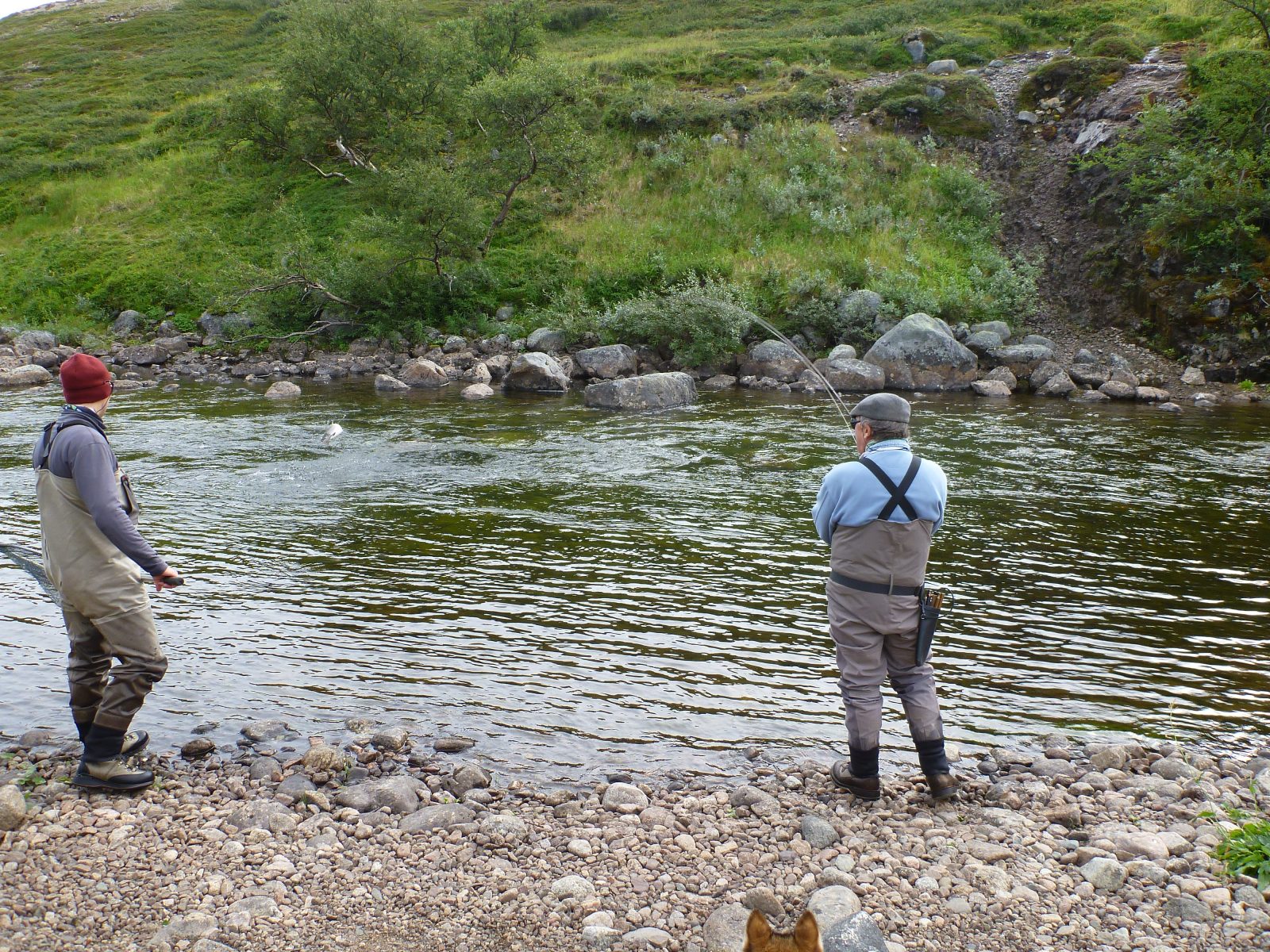
The Zolotaya (Golden River – Kola Peninsula, Russia) – my favourite little salmon river. Heaving with fresh sea trout, grilse and some larger salmon this little arctic stream remains unaffected by the warming seas plaguing southern populations of Atlantic salmon. The Likely Suspects Framework is designed to tell us why…
We are in a time when arguments for policy change must be evidence-based. It is the job of the research scientist to disentangle and objectively examine each of the arguments put forward by the proponents of the various factors, to see which are supported by factual data and to prioritise areas for urgent research where such data do not exist.
As scientists, we’ve struggled in prioritising which areas should be examined, for in truth salmon populations are extremely complex and the mortality factors impacting on juvenile and adult salmon are highly variable, particularly when looked at on a regional or a catchment scale. To demonstrate the complexity of the salmon’s life cycle and how changes in mortality at various life stages can have surprisingly little or surprisingly large impacts, the Atlantic Salmon Trust (AST) has on its website a salmon modeller (see link below). The salmon population modeller is a web-based demonstration tool designed to provide anglers, managers and everyone interested in salmon with a clearer understanding of how salmon populations work.
Over the past year the AST has developed a concept that seeks to provide a coherent approach on how to assess the importance of the various candidate mortality factors and how future salmon research areas can be targeted and prioritised. This has become known as the “AST Likely Suspects Framework”.
The building of the Framework is part of the AST’s Missing Salmon project, the main aim of which is to understand where and how salmon are dying so that urgent management measures can be put in place to reverse this decline.
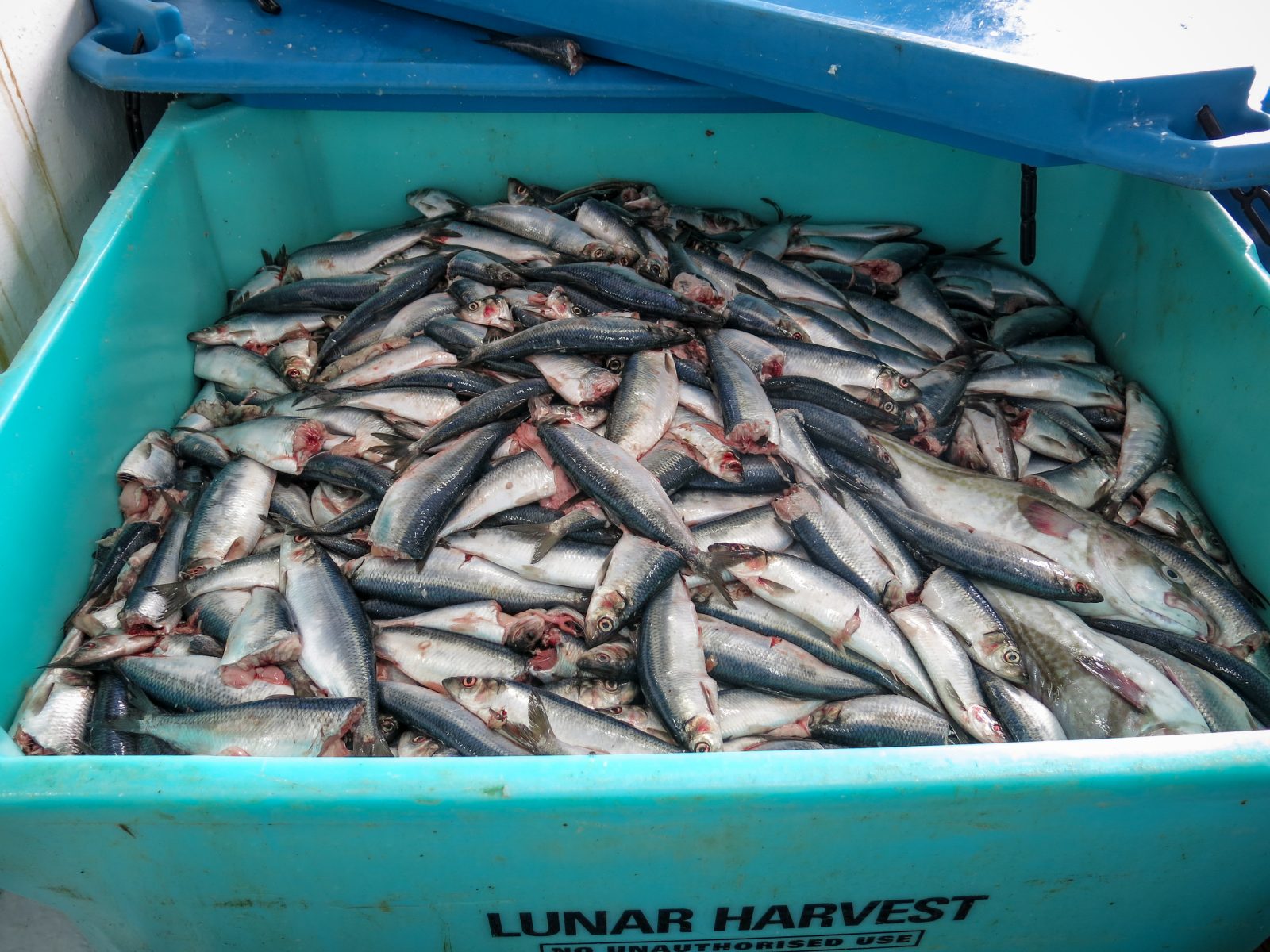
Just how many salmon post -smolts are accidentally caught by pelagic fishermen has, until now, remained a worrying mystery. University College Dublin (UCD) and AST have recently developed a genetic eDNA probe to test for salmon DNA in these pelagic reaches.
In November 2017 a group of experts from around the Atlantic and Pacific attended a technical workshop at the headquarters of the North Atlantic Salmon Conservation Organisation (NASCO) in Edinburgh. This meeting was also the first preparatory event for the forthcoming International Year of the Salmon in 2019.
The Likely Suspects Framework places candidate mortality factors (“likely suspects”) within an overall framework covering the freshwater, migration and marine phases of the salmon’s life cycle. The workshop concluded that it would be best to start by identifying zones or “ecosystem domains” in the life cycle of salmon where significant mortality is believed to be taking place. Such domains can be placed at geographical locations or allocated to particular phases where significant marine mortality factors operate (e.g. estuarine/coastal; near-shore; migration to feeding grounds, coastal return/river entry). However, what happens during other phases lying outside the marine environment, such as smolt migration through freshwater, may influence subsequent survival at sea and these must also be represented in the Framework.
The overall objective of the framework is to identify the various mortality factors involved and quantify the potential for each factor to influence salmon survival. In an approach more akin to financial accounting than mathematical modelling, the cumulative effect of these factors is made to account for the observed survival of smolts to sea or the number of adults returning from the sea. You start with the answer and build a framework which explains why and where the observed mortality over the life of the salmon from smolt to adult is taking place. This can be used to identify the likely impact, both individually and cumulatively, of the various “suspects”.
The workshop concluded that there will be domains where mortality factors impact many stocks, while others where only a few stocks or even a single stock are impacted. In visualising this, the workshop advised that it may be useful to think of salmon from a given stock on their migratory journey passing through successive mortality domains, where they are joined by salmon from other stocks, and so on. It is important to concentrate on the big numbers and on places or periods where any mortality impacts are likely to affect a large number of stocks. Major areas of interest are not necessarily at an oceanic scale – e.g. space/time axes in freshwater and estuaries can be very discrete, such as hotspots where fish get slowed down and get preyed upon. Conversely, oceanic domains may be on a very wide scale. Lessons from the Pacific are that marine survival is a very dynamic process and factors that cause significant losses to some stocks in some years, may be less significant or even absent in others.
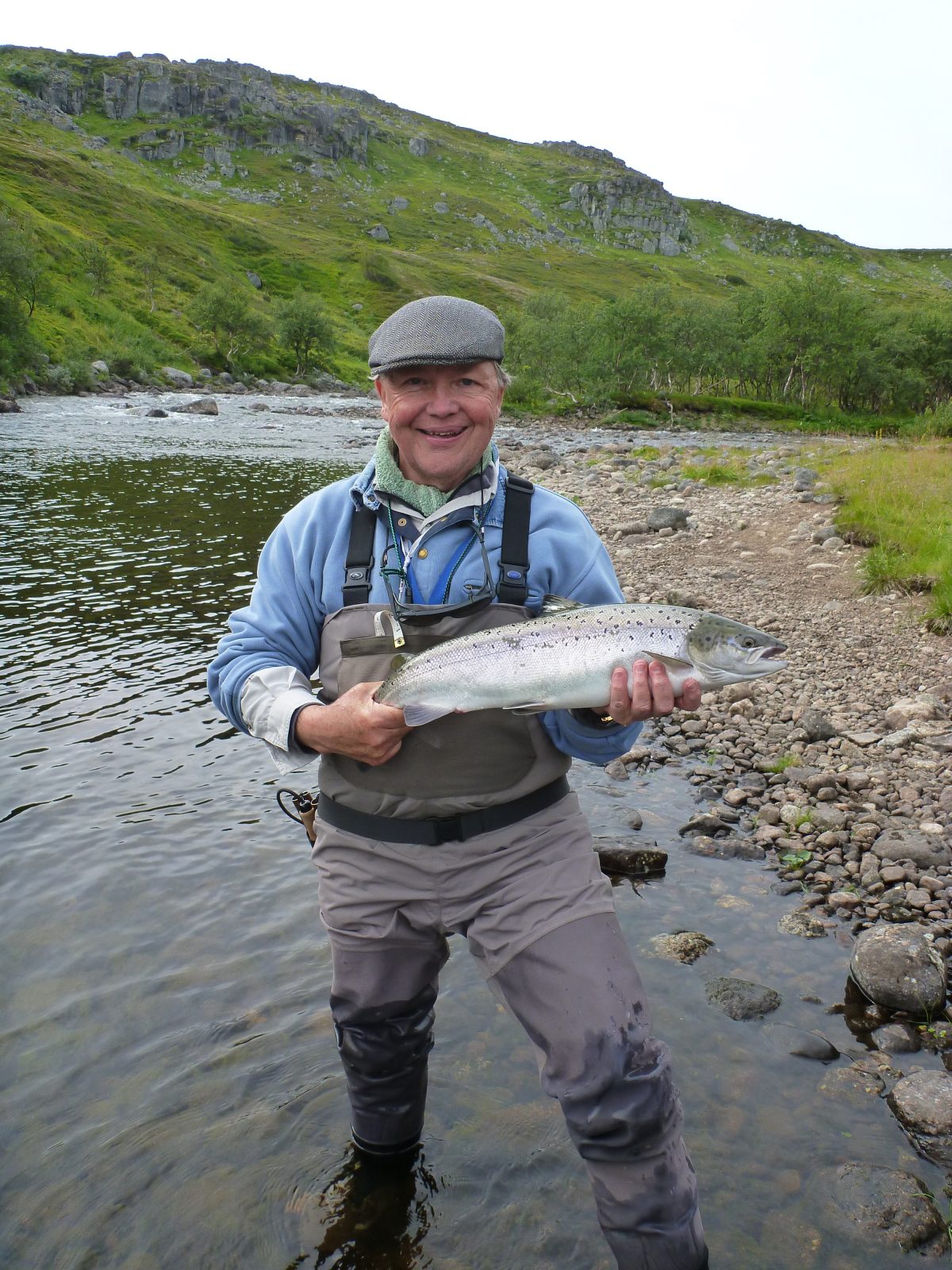
The Zolotaya (Golden River – Kola Peninsula, Russia) – my favourite little salmon river. Heaving with fresh sea trout, grilse and some larger salmon this little arctic stream remains unaffected by the warming seas plaguing southern populations of Atlantic salmon. The Likely Suspects Framework is designed to tell us why…
At a local scale, a sensible management strategy would be to maximise output of smolts and to maximise their chances of success at the critical freshwater-marine interface and during their early marine period. This is a main objective of the ASTs Moray Firth Project, planned for next spring, which targets five of the major salmon fisheries in Scotland.
In relation to climate change the workshop concluded that impacts on salmon populations are likely to be spread over several parts of the life cycle, with responses to changes in river growth, growth at sea and hence overall year class survival, having cumulative and confounding effects on resultant population levels. Climate change is likely to be a driver of major significance, with effects being felt at very broad scales and in different ways. For example, there are clear trends towards general ocean warming, but also there is potential for short term or single year anomalous occurrences, where “big” events, such as unusually severe floods or droughts, have a disproportionately high impact. Climate change may also have a worldwide impact on salmon species. Significant impacts may be felt in freshwater as well as at sea. The mechanisms of change involved are likely to be very complex and multi-factorial. Teasing these apart will be challenging.
One particularly important conclusion was that in periods of high marine survival, generating a significant surplus of salmon, some of the mortality factors have a far less significant effect. In years of bad oceanic conditions, when salmon populations are poorly buffered against such impacts, the overall effects of mortality factors at the early stages of their migration is far more significant. This can result in low numbers of post-smolts reaching their feeding grounds at sea and poor overall marine survival. As can be seen from the AST’s salmon modeller, protecting smolts is vitally important during challenging periods of high ocean mortality, as we are experiencing at present.
The workshop provided a set of very detailed recommendations on how best to build the Likely Suspects Framework and how, over-time, it can be developed into a practical and functional model to assist with the management and the rebuilding of salmon stocks, both in the Atlantic and in the Pacific. It has been agreed that the Likely Suspects Framework will form the basis for a major International Year of the Salmon signature project and work is ongoing to convene a series of salmon data workshops to develop hypotheses relating to the principal mortality factors impacting on salmon stocks, and to then compile the relevant marine data sets for the building of Likely Suspects Frameworks for both the Atlantic and the Pacific oceans.
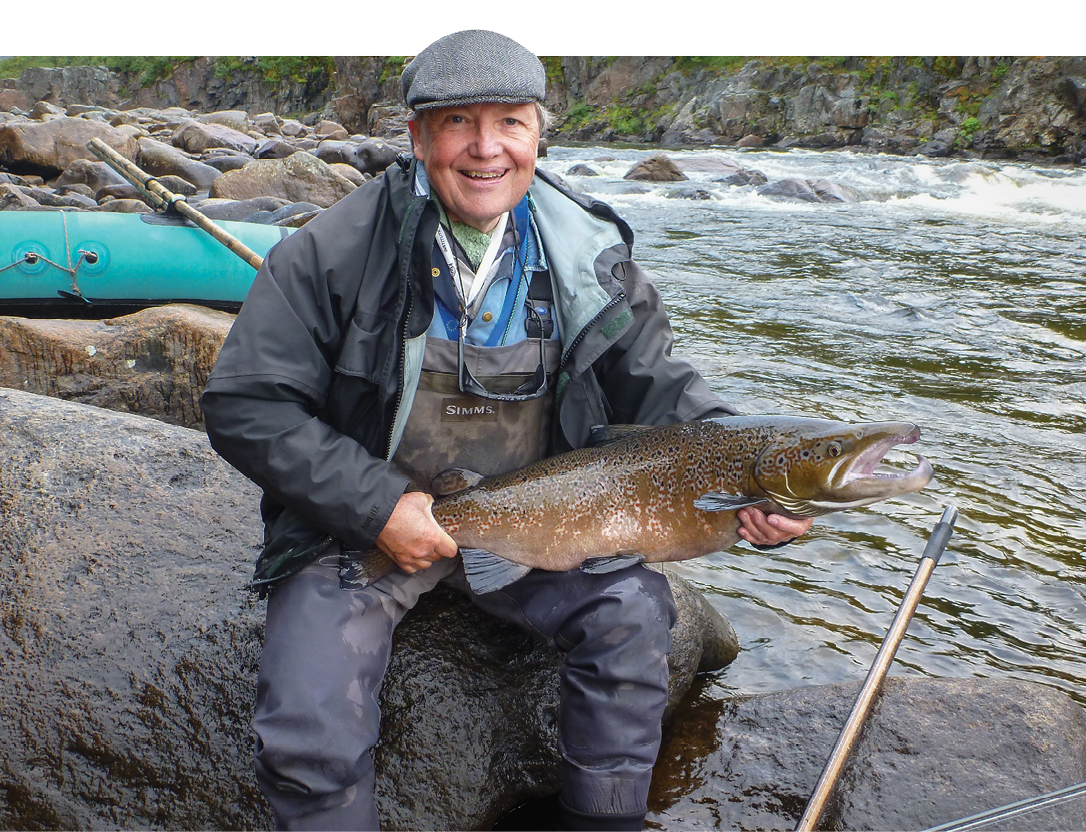
The Missing Salmon Project is firmly based on the belief that saving salmon smolts in freshwater, in estuaries and at sea can help boost adult returns – such as this magnificent male from Russia’s Eastern Litza River
The full report of the Likely Suspects Framework Workshop is available online in the form of an AST Blue Book (see link below).
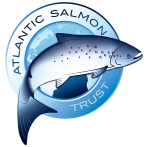 About – Ken Whelan
About – Ken Whelan
Ken Whelan is a keen angler and a regular contributor to Off the Scale. He’s also a research scientist and has for over 30 years studied the biology of Atlantic salmon and their fascinating cousins the sea trout. He’s worked for a range of research and fisheries management organisations. He’s currently Research Director with Atlantic Salmon Trust. Ken will be describing in a future article how the International Year of the Salmon came about and the importance of this initiative to anglers and managers in Ireland.
Useful Links:
Blue Book on the Likely Suspect Framework
Burning Questions
The following section is Ken’s answers to our questions regarding the Mackerel hypothesis, stocking and smolt ranching and the most effective management measures when resources are limited.
Survival of salmon smolts at sea has been reduced quite significantly, what are your thoughts on the hypothesis that the substantial increase in Mackerel stocks is a major contributing factor?
In asking the question about the hypothesis of increase in mackerel stocks potentially being a major contributing factor to the reduction of salmon smolt survival, you are going to the very heart of the likely suspects framework – and I’ll answer the question about the mackerel in a moment – but in terms of the likely suspects framework what we are trying to do is amalgamate all the of the information that we have available. Part of the difficulty that we have is that some of the information that we are getting are hypotheses, such as the mackerel one, but there are no data. So, if there are no data we cannot actually test them. In terms of changes in the ocean and so on, we are going to be combining forces and at the moment we are planning a major series of workshops with the International Council for the Exploration of the Seas – they are the experts in the marine world, my expertise are the salmon. So, I think all of these hypotheses, we really should be looking at them, we should be examining them, but in order to put them into the framework we need numbers and there are no numbers at the moment. That is our difficulty.
In the last three to five years it has been very challenging in terms of salmon catches on Scottish rivers, which has often led to a call for major restocking programmes and smolt ranching. Do you have any thoughts on those measures?
In terms then of restocking and smolt ranching to enhance Scottish rivers there is a huge amount of confusion. There is a world of difference between ranching and stocking and I do not think people fully understand that. I think it is part of the difficulty that these terms tend to be used very loosely. Let us, first of all, start with wild fish, in terms of the actual improvement of wild fish through the use of hatcheries. In 2013, we ran a major conference on salmon stocking, we invited all of the practitioners, the scientists and the managers to attend – it is all on YouTube, it is there for people to see, there is two documents on the webpage that outline all of the results (see here and here). Scientifically at this day, there is very little evidence that enhancing rivers in a situation we find ourselves in in Scotland by taking out the remaining adult fish, putting them in a hatchery and then putting the juveniles back in the river – there is no scientific basis for doing that. You are far, far better off actually just supporting the stocks. So, making sure they have excellent protection, both in terms of adults returning and smolts getting back out to the feeding ground. That is going to give you much, much better dividends than in a situation where you take the few remaining fish and you imagine that, because you get some improved survival inside of the hatchery this going follow through in terms of the wild stock.
In terms of salmon ranching first of all, I have been very privileged to have been one of the only people to actually have run a smolt ranching programme. It is difficult to explain in a couple of sentences – but salmon ranching has absolutely nothing to do with spawning and wild salmon. Salmon ranching is a technique that was developed to actually produce fish flesh and what you do is, you actually line breed a particular strain of salmon so that it does very well in a hatchery and does well at sea and provides you with very good – relatively speaking – very good rod return and if you want to sell the fish that comes back then for fish flesh and for food that is also quite feasible, because you are not dealing with the wild fish at all. There has never actually been a salmon ranching programme in Scotland, so it is very hard to comment. But, certainly in terms of the ranching that was carried out in Iceland and Ireland, if the marine survival, and that is not the case at the moment, if the marine survival is reasonable or good, salmon ranching has a part to play in terms of providing fish back to the angler, but it has absolutely nothing to do with increasing the actual reproductive capacity of the stock. They are two completely separate entities and normally if you got to go ranching you have to have a trap, so that you capture all the fish that are returning from the ocean. There is a good explanation of this in the stocking conference link and there is a lot of confusion when people think that you can take a wild fish, grow them to the smolt stage, release them out into the ocean and they are going to perform like ranch stock. That is not the case.
In terms of the anglers’ views, they will tell you that they are interested or protest that they are interested in having extra spawning fish, well, they are, but only if those extra spawning fish are going to produce more fish to the rod. In terms of producing more fish to the rod, ranching could very well be a strategy on some small rivers that will work, and certainly it worked very well for me, but only at a time when we were looking at two or three times the survival rates that we have at the moment. So, just to say that it is not a simple thing were you say ‘well, ranching is not going to work.’ In terms of angling, in terms of purely producing a ‘put and take’ fishing in a very sophisticated way for salmon fishing there may be merit in looking at it, as the actual survival s for salmon increase on some of the smaller systems, but I do not think it is possible to trap something like the Deveron, it is more small west coast rivers that it could work on.
We have very limited resources locally and nationally to protect and enhance local fish populations. In your opinion, what are the management measures that give the biggest return on investment?
Regarding management measures, I do not think it is possible to give a magic recipe, I think it very much depends on each individual catchment as to what are the limitations. So, in terms of what needs to be done, you need to then do your survey, you need to look at the likely suspects framework, you need to look at your limiting factors, you need to prioritise those limiting factors and then you need to work on those limiting factors. For example, in some systems there may be huge validity in terms of impacts from predators, in others areas there may be problems in the upper reaches, like the Dee, in terms of increasing water temperatures and lack of tree cover, in other locations it may be fish access and it may be how to get over a barrier – so it depends very much on each individual catchment. I think if people read the actual blue book that we produce, the scientific blue book (Scientific Blue Book), they will see in that there is a logic in terms of how you go about this and how you actually assess what are the limiting factors in your catchment and how you prioritise those. That is really what we are going to try and do now over the next two or three years – give people a format by which to do that.
What we have at the moment then is we have two initiatives running in parallel – we are going to work through NASCO with the International Council for the Exploration of the Seas. They have all of the marine data, they can tell us what happens to the fish when they hit the saltwater. Then we are going to try, through the ‘Missing Salmon Project’ (Missing Salmon Project) to make a start at looking at all of the available freshwater and estuarine information in the seven key rivers. And again, I think there is a very compelling logic in that we are actually combining the marine and freshwater and estuarine data – we look at the whole life of fish, identifying where they are actually dying and what can we do to get more salmon smolts back from the feeding grounds and that is what we are trying to do in the ‘Missing Salmon Project’.






